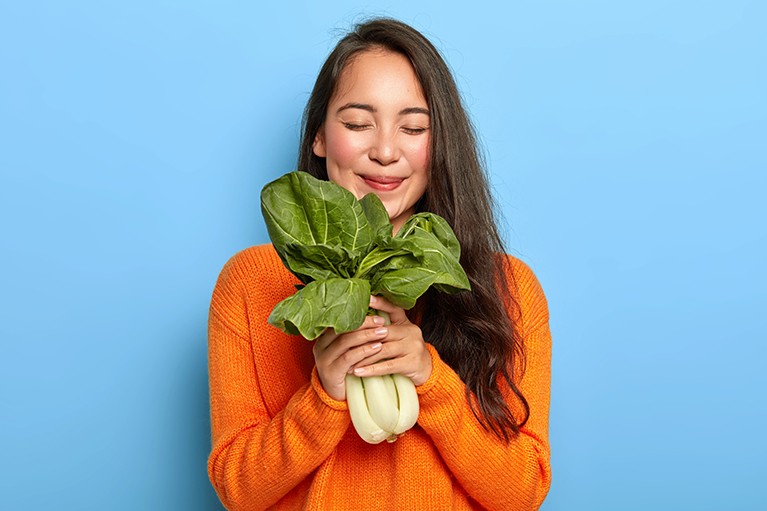Blue About Food
June 6, 2023

The Marianas has nurtured and built much of our local culture around our island cuisine and let’s face it, our food is AMAZING. The Marianas’ cuisine has garnered global acclaim especially in the increasingly connected food critic scene on social media. We as an island people can be proud of the fact that our food has been well-received in the mainland and by many other foreigners. This is because our island plate is new, exciting and fresh. However, for those of us on-island there is a growing demand for healthier food options both in the grocery store and on the table.
Whereas ten years ago people would joke about the untouched raw and stale-looking salad that sits amidst the numerous other side dishes — usually next to the potato salad its more popular cousin, the salad is now often seen promoted to the front of the fiesta table and running out fast. This is altogether a good sign, however the store bought ready-mixed salad can easily make you blue about your healthy food options at the fiesta table. Just ask any vegetarian, vegan or dieting friend or family member.
Although we have much to be proud of our island food table, there is a cultural reset taking place and the main front is in the fruits and vegetables that have for many years gone absent at the party. If you sit with any manamko they’ll likely say that this is a fairly recent development as back in the day fruits and vegetables were not just abundant but a means to survive with labor intensive foods such as meat and starches being far less available. To get by on a daily basis fruits and veggies were a way of life.
So, what happened and when did our fiesta table take such a left turn? According to Guampedia we owe much of this change to the industrialization of the island which parallels changes in dietary patterns to a westernized diet. So, what do we do from here and how can we kick the food blues for those of us in the islands who are looking out for our health with no help from the island party scene?
Eat the Rainbow
Our island people are a colorful people with various backgrounds, experiences, and mixed heritages and this is very much reflected in our local cuisine. As colorful as our island is perhaps it’s time to add just a touch of color to the plate by eating the rainbow in order to bring our diets back to basics.
Eating the rainbow means eating fruits and vegetables of different colors every day. Plants contain different phytonutrients that typically give them their color and these colorful plants can help you achieve better health through the specific nutrients they provide. Although it is difficult for food science to determine the exact efficacy of phytonutrients, the science is clear that eating a balanced diet consisting of different fruits and vegetables is overall healthy and part of a wholesome diet. Given that most American do not get the recommended number of fruits and vegetables according to the CDC — only 1 in 10 U.S. adults — eating a colorful diet of fruits and vegetables can be helpful in getting you to start.
If you are ready to take better care of your health and are looking for fun creative ways to do so, try venturing into the colorful world of plant-based foods to find inspiration. Just to make it simpler for you, we recommend giving blue and purple foods a try. Here is a breakdown of some of the fruits and vegetables that you could try and their known vitamins, minerals and associated health benefits:
Fruits & Veggies
- Blueberries
- Blackberries
- Concord Grapes
- Red/Purple Cabbage
- Eggplant
- Plums
- Elderberries
Main Phytonutrients
- Anthocyanins - the blue or purple pigment found in plants.
Main Vitamins & Minerals
- Fiber
- Manganese
- Potassium
- Vitamin B6
- Vitamin C
- Vitamin K
Health Benefits
- Anti-inflammatory
- Antioxidant
- Help to reduce your risk for Type 2 Diabetese
- Helps to reduce your risk for certain cancers
- Helps to reduce your risk for heart disease
Make it Fun
Understandably, incorporating new foods into your diet is not always an easy feat. Especially for fruits and vegetables where most may think that you have to eat them raw in order to receive the maximum health benefit. However, you should remember that not all fruits and vegetables are created equal and in fact some plant-based foods actually gain more nutritional value after being cooked. The best way is to use your impressive google talents to learn more about what’s on your plate and the best ways to prepare it. If that’s still too much work, food and medical scientists still want you to know that eating more vegetables in general — cooked or uncooked — is still far more beneficial than your usual American fare of meat and carbohydrates alone.
At the end of the day the goal is to up the total number of fruits and vegetables in your diet and hopefully inch closer toward the 2 cups a day as is recommended by the CDC for a happy, healthier lifestyle. So, go out there and get creative, eat the rainbow and make it fun!

